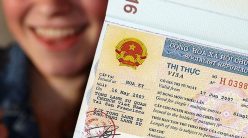The provisions of the law
From Articles 484 to 490, Chapter XXXIV of the Criminal Procedure Code 2015 provides for the protection of crime whistleblowers, witnesses, victims and other procedure participants.
Clause 1, Article 484 stipulates that subjects protected in criminal proceedings avoid the risk of being harmed to their lives, health, honor, dignity, property and other legitimate interests, including: Crime whistleblowers ; witness; victim; relatives of crime whistleblowers, witnesses or victims.
For the first time, whistleblowers are designated as participants in the proceedings and they have the right to claim protection (Article 56). In addition to crime whistleblowers, protected persons also include witnesses, victims, relatives of crime whistleblowers, witnesses and victims. Thus, the 2015 Criminal Procedure Code has expanded the scope of protected subjects and regulated more systematically than before, not only protecting witnesses and their relatives.
Persons protected under the provisions of the 2015 Criminal Procedure Code not only have the right to request and request protection like the 2003 Criminal Procedure Code, but also have other procedural rights specified in Clause 2, Article 484: Request protected; be informed and explained about their rights and obligations; be aware of the application of the safeguard measure; propose to change, supplement or cancel protection measures; be compensated for damage, restore honor, and secure legitimate rights and interests during the protection period. The protected person has the right to request or request the application of protection measures in writing or to present it directly or through the means of communication, but then must still make the request or request in writing. (first). These regulations create conditions for protected persons to make requests and requests to competent agencies quickly and expeditiously, and at the same time choose the most suitable protection measures for them.
Along with the right to request and request protection, Clause 3, Article 487 of the 2015 Criminal Code stipulates: Strictly comply with the requirements of the protection agency related to protection; keep confidential information protected; promptly notify the agency in charge of protection of questionable matters during the protected period. This provision of obligations ensures the coordination between the protected person and the agency responsible for protection in order to protect the life, health, honor, dignity, property, rights and other legitimate interests of the protected person. they are the best.
Persons having the right to request or request the application of protective measures
Subjects requested to be protected are those whose life, health, property, honor and dignity may be harmed or threatened by the provision of relevant evidences, documents and information. to criminals such as: crime whistleblowers, witnesses, victims, witnesses, interpreters, translators.
People’s Procuracy and People’s Courts at all levels, if deeming it necessary to apply protective measures to the protected person. In the case of a criminal case or case handled, handled and investigated by the investigating agency of the Supreme People’s Procuracy and the Central Military Procuracy, if it deems it necessary to apply measures. protection for the protected person shall report to the Chief Procurator of the Supreme People’s Procuracy and the Chief Procurator of the Central Military Procuracy. The Director shall make a written request to the Investigative Police Agency, the Investigative Security Agency of the Ministry of Public Security, the Criminal Investigation Agency and the Investigative Security Agency of the Ministry of National Defense to issue a decision to apply protective measures. (2).
Competence and procedures for deciding to apply protective measures
Although the protected person can make requests or requests at any time during the criminal case resolution process when it is deemed necessary, the authority to make decisions on the application of protective measures is focus on the investigation agency of the People’s Public Security and the People’s Army, depending on which investigation agency the case is accepted and resolved. Specific authority belongs to the Heads and Deputy Heads of the Investigation Agency (3).
The 2015 Criminal Procedure Code concentrates its authority on the investigating agency because it is an agency with sufficient professional capacity to check the grounds and assess the authenticity of the request or request for protection. . In addition, this is also the agency that will decide on protection measures as well as specific protection plans or change protective measures during the protection process.
Regarding procedures, heads and deputy heads of investigating bodies must issue decisions to apply protective measures. The decision includes the following main contents: Number, day, month and year; decision-making site; the position of the decision maker; decision-making grounds; full name, date, month, year of birth, place of residence of the protected person; safeguard measures and the time when the protective measure commences.
The decision on application of protective measures shall be sent to the requester, the protected person, the Procuracy, the Court that has requested the application of protective measures and the agencies, organizations and units involved in the protection measure. protection (4).
The investigative agency that has made a decision to apply a protective measure must make a protective record. A protection dossier includes: A written request or request for application of protection measures; minutes on the proposal or request for application of protective measures; verification results on acts of infringing or threatening to infringe upon the life, health, property, honor and dignity of the protected person; documents on the consequences of damage occurred (if any) and the handling by the competent authority; a written request or proposal to change, supplement or cancel a protection measure; decide to apply, change, supplement or cancel protection measures; documents reflecting the progress of the process of applying protection measures; written request, request agencies, organizations and individuals to cooperate in protection; report on the results of the implementation of protective measures; decide to terminate the protection measure; documents and other documents related to the protection.
Protective Measures and Termination of Protection Measures
For the first time, measures to protect the life, health, property, honor and dignity of the protected person are officially recorded specifically in the Criminal Procedure Code. Article 486 stipulates the following measures: Arranging forces, taking professional measures, using weapons, supporting tools and other means to guard and protect; restrict the movement and contact of the protected person to ensure their safety; keep confidential and require others to keep confidential information related to the protected person; move, keep secret accommodation, place of work, study; change the whereabouts, background and identity of the protected person, if they so agree; deter, warn, and neutralize acts of infringing upon protected persons; prevent and promptly handle infringing acts in accordance with law; other protective measures as prescribed by law.
The investigating agency competent to apply must immediately organize the implementation of protective measures after issuing a decision to apply protective measures. In case of necessity, they can coordinate with agencies and units in the People’s Police and the People’s Army to carry out the protection. The application or change of the prescribed protection measures must not affect the legitimate rights and interests of the protected person.
When deeming that the grounds for infringing upon or threatening to infringe upon the life, health, property, honor and dignity of the protected person no longer exist, the head of the investigating agency that has decided to apply protective measures must: make a decision to terminate the application of a protective measure. The decision to terminate the application of protective measures must be sent to the protected person, the agency that has requested the application of protective measures and the agency, organization or unit related to the protection.
Although there are still limitations in the provisions on protected persons as analyzed above, the provisions of Chapter XXXIV of the Criminal Procedure Code 2015 on the protection of crime whistleblowers, witnesses, victims, and prosecution participants Another legal framework has created a basic legal framework for the practical implementation of protection measures for those at risk of being harmed. These regulations not only contribute to the protection of human rights in criminal proceedings, but also play a role in promoting the active and proactive participation of everyone in the process of detecting and handling crimes.
Source: According to kiemsat.vn
For support and advice on Business, Investment, Intellectual Property, Tax,… in the best way, please contact us with the following information:
DHP LAW
Address: L4-09.OT06 Landmark 4 Building Vinhomes Central Park, 720A Dien Bien Phu, Ward 22, Binh Thanh District, Ho Chi Minh City








